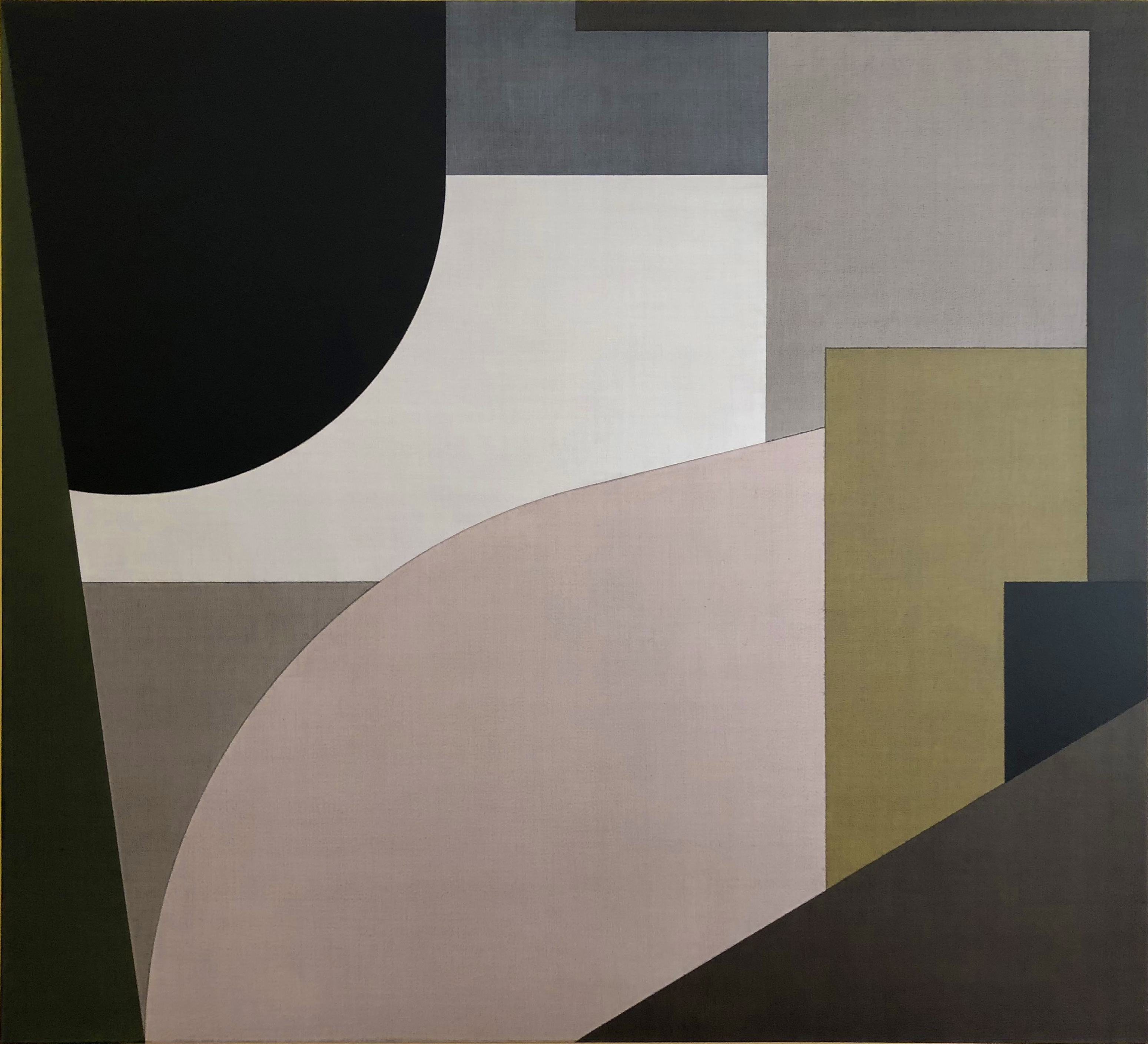Timothy App
(Akron, Ohio, 1947 - )
Bacchanal
2005
Acrylic on canvas
60 x 66 in. (152.4 x 167.6 cm)
Collection of the Akron Art Museum
Gift of Joseph and Christine Smerick
2021.27
More Information
Describing App’s work from the Black Paintings onward, Richard Shiff writes the following: “His paintings of the past two decades consist of taped-out geometric forms, differentiated by thin layers of contrasting, but often muted color. With extreme care, he builds and balances the textures. The slightest surface differentiation can seem glaring.” All of this is quite fitting, but the words “muted” and “thin” perhaps form an understatement. While App began this trend in his work with the Black Paintings, working in grisaille for a full and carefully modulated range from white to gray to black, in subsequent series he has added color in a very unusual way. Kristen Hileman adds further detail: “After building his compositions in tonal grays, the artist uses color as ‘an agent of transformation,’ applying glazes of cadmium yellow, ultramarine blue, cadmium red, and Hooker’s green to catalyze certain shapes, which are further juxtaposed with areas of white ground and opaque black.” But again, “glazes” doesn’t quite cover it. App’s application of the few specific colors that Hileman lists is so sparing, so slight, and so thin that the hues are almost unrecognizable. They appear not as primary colors in their familiar bright and saturated forms, but as delicately muted pink, brown, green, yellow, or navy. This delicacy extends further to the prominent texture of the canvas—per Hileman, “App applies paint with his canvases positioned horizontally on sawhorses rather than in a vertical orientation. He follows the weave of the canvas so that no errant drips or erratic brushstrokes distract from the pure force of color and shape.” App’s delicacy also makes the results of his taping surprisingly prominent—at each geometric boundary in his paintings, dark paint accrues, builds upward, and stands out from the surface. Alongside the texture of the canvas, these raised edges come to look like woven seams. As Shiff puts it, within App’s work “Such directness and simplicity breeds complexity.” Indeed, this is simplicity taken so far that the process of paring down folds in on itself and reveals new possibilities in color and form. The artist describes this urge to intensively “bring something down to the essentials” as inspired by his enduring interests in Minimalist art and the work of Piet Mondrian. In the Homage paintings, App layered an additional process of simplification on top of the techniques that he had established in the prior Black Paintings (grisaille) and the Multiform Paintings (color). For each composition, he started with a canonical work of Western art (always one that he had seen in person) and then distilled it down into an array of geometric forms. Bacchanal, for example, began with Titian’s Bacchanal of the Andrians—a reclining nymph becomes a solid triangle, a group of figures transforms into a sweeping arc, a leaning tree appears as a square with an added notch, etc. In Shiff’s words, these unsystematic yet considered approaches to existing compositions “indicate how an abstract artist might perceive abstraction within the tradition of representational painting. They also demonstrate how intuitive App can be even at his most analytical… he begins to depart from the one-to-one; while respectful of his model, he introduces an element of free play… a fantasy of geometric forms.” Wei’s broad reading of App’s entire career is also relevant to the Homage paintings’ historical connections: “App believed in pushing Minimalist ideologies beyond an orthodox reading toward something more humanistic, more metaphoric. He wanted to reconcile measure, structure and materiality with illusionism, allusive content, and metamorphoses in order to reflect the long arc of painting’s history, to elegantly juggle the factual and the poetic, aspiring to a form of painting that transcended time and place to become universal.” The Homage paintings, with their many layers of simplification, seem to be the strongest realization of these tendencies. App’s own statement on the series indeed makes similar points: “The invisible undertow of history is deeply and inevitably felt as I work with elemental forms, coaxing depiction out of abstraction, witnessing reality mingling with imagination. Time has shown that the more I become the dispassionate agent of the universal, the more personal and interior the work becomes. Through these paintings, I am seeking artistic and spiritual continuity with the past.”

